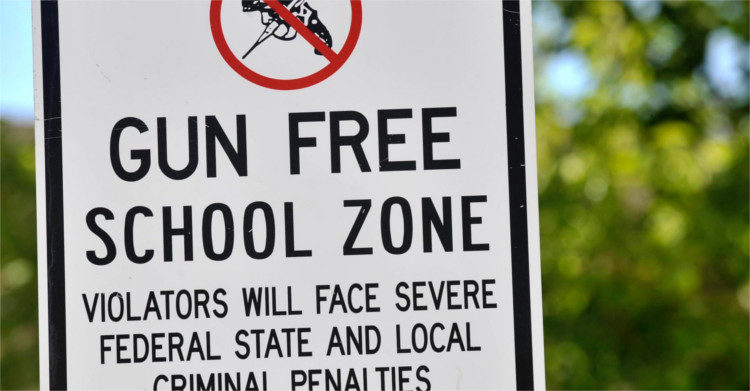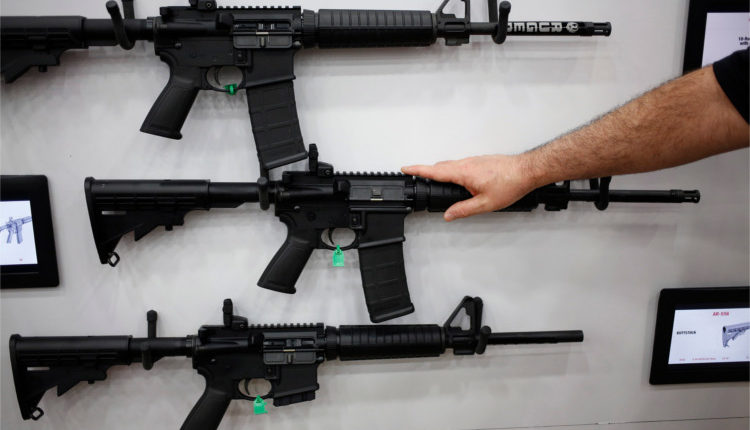Gun Control & The Pursuit of Happiness
Guns, mental illness, and violence are one of the most explosive Molotov cocktails being thrown at steps of the Capitol, threatening everything that America is founded upon. There is no pursuit of happiness when our own children don’t feel safe in the very classrooms in which they learn about the Declaration of Independence and the Constitution.
A century from now, assuming that the world has endured, how will history professors lecture about guns in America in the late 20th and early 21st centuries? Will there be a seminar at Princeton entitled “Ill Society: Weapons, Brain Sickness, and Archaic Delusions”? How will future generations reflect on such a primitive time plagued by gun violence, with a political system that refuses to take any action of consequence? Will there be collective horror in high school classrooms when students learn of the ceaseless slaughter that went on for decades in the very schools in which they sit?

The solutions (plural) to stopping the violence and alleviating the fear are not easy, are not politically popular, and are not politically correct. But they are simple. No more semi-automatic weapons. Thorough background checks for those who want a handgun. The grandfathering of the guns that are currently owned with severe repercussions for those who illegally sell those weapons.
Why is that so extreme?
Should I take it easy? Do we need some statistics first? Okay. It’s probably a good idea to first get back to studying and researching gun-control, since we haven’t been doing that for two decades, as reported by The Washington Post in October 2017. According to Todd Frankel’s article, “In 1996, the Republican-majority Congress threatened to strip funding from the Centers for Disease Control and Prevention unless it stopped funding research into firearm injuries and deaths. The National Rifle Association accused the CDC of promoting gun control. As a result, the CDC stopped funding gun-control research — which had a chilling effect far beyond the agency, drying up money for almost all public health studies of the issue nationwide.” The issue has become part of politics as opposed to part of science: “Researchers in search of private funding say they know to avoid the word “gun” or “firearm” in the titles of violence-prevention studies to avoid blowback.” Let’s stop selling guns until the research is completed, and then we can reopen the issue. But what could any study possibly find that would make it reasonable to sell semi-automatic weapons that discharge hundreds of rounds per minute?

The purpose of a democratically elected government is to protect its people, first and foremost. The right and the left—conservative and liberal—debate exactly what this notion of protection is, but most of us can agree that protection is its primary purpose. In the case of gun ownership, the government is responsible for protecting us from ourselves.
A 2013 report from the Pew Research Center estimates that there are anywhere from 270 million to 310 million guns in the United States. CNN cites a 2009 National Institute of Justice (NIJ) report that states there are an estimated 310 million firearms in the United States.
We are no longer in a position to be protecting ourselves from governmental tyranny, and that position — that is, to be able to organise a citizen militia—is, as Mark Nuckols, writing for The Atlantic, states: “the worst pro-gun argument ever.” First and foremost, the Supreme Court has already made a decision on this distinction: “in District of Columbia v. Heller a majority of the [Supreme Court] justices found an individual right to gun ownership, unrelated to membership in a state militia. But the Heller decision also makes it clear that this [gun ownership] is not an unlimited right, and that it may be subject to extensive government regulation.” The government absolutely, unequivocally has the right to regulate guns in a manner it sees fit.

What chance, anyway, would a modern form of an eighteenth century militia have against the all-powerful US military? Regardless of the 65 percent of Americans who “see gun rights as a protection against tyranny,” it’s 2018, and the days of arguing that guns protects the populace from tyranny are over—the argument itself being archaic and downright outrageous. Just take a look from this graphic from The New York Times.
In November 2017, a Rasmussen Reports national telephone and online survey found that “66% of Likely U.S. Voters now think the United States needs stricter enforcement of existing gun control laws following the Texas shooting. That’s up from 61% in 2015, but down from 68% the year before and 73% in late 2013.” The country is behind this movement. The country understands that protecting ourselves—our children—is the right thing to do. The country understands that Thomas Jefferson and George Washington and John Adams and the rest of the founders did not intend to have semi-automatic weapons, firing hundreds of rounds per minute, being fired at children in a classroom.
The problem isn’t entirely guns, but it is the guns that kill people. The problem isn’t entirely the mentally ill, but it is the mentally distraught who pick up the guns to kill people. The problem isn’t entirely the government, who hasn’t done enough to regulate the guns that are picked up by mentally distraught individuals who kill people. So let’s start with the government stopping, from this day forward, anyone legally purchasing a semi-automatic weapon. Let’s step back, look at the research, and take a couple of years to process what we’ve allowed to go on for far too long.
